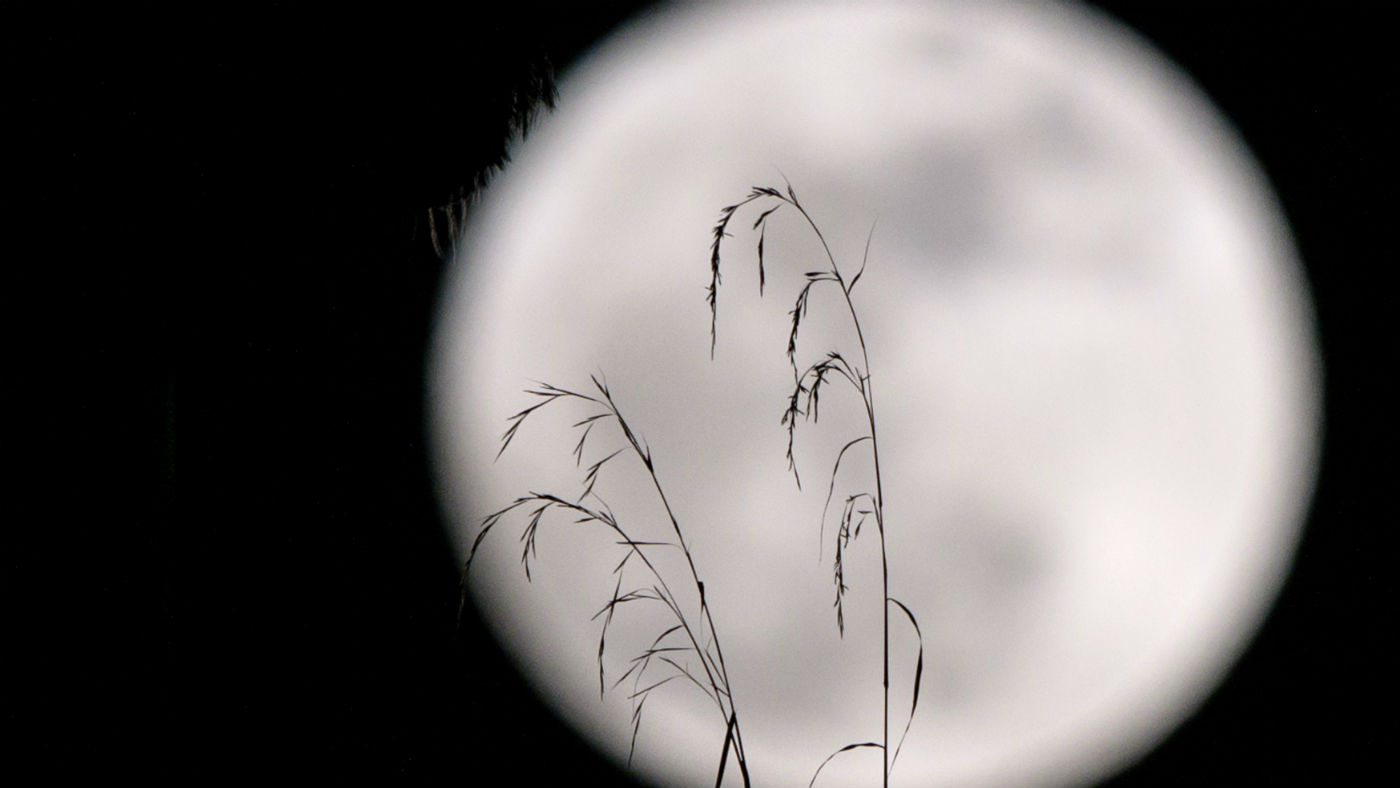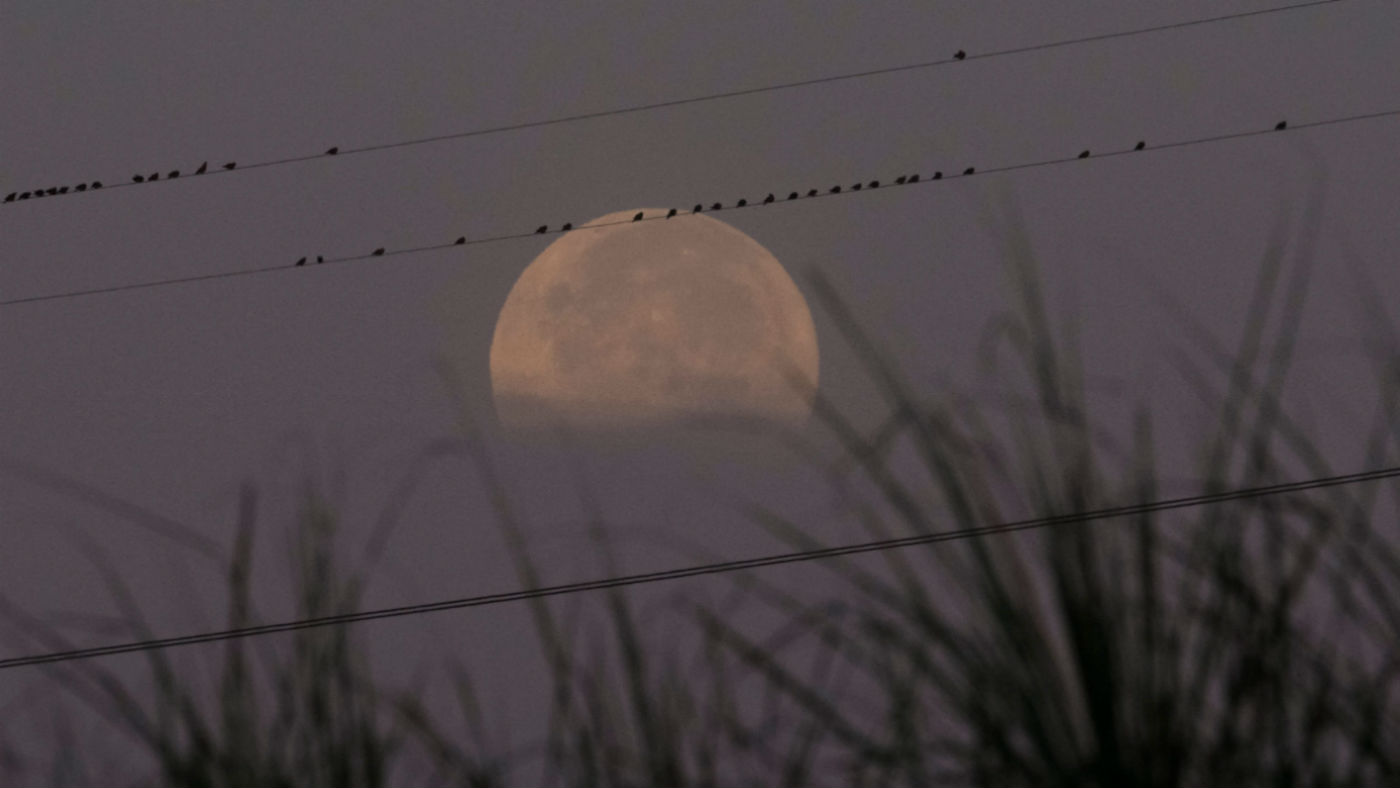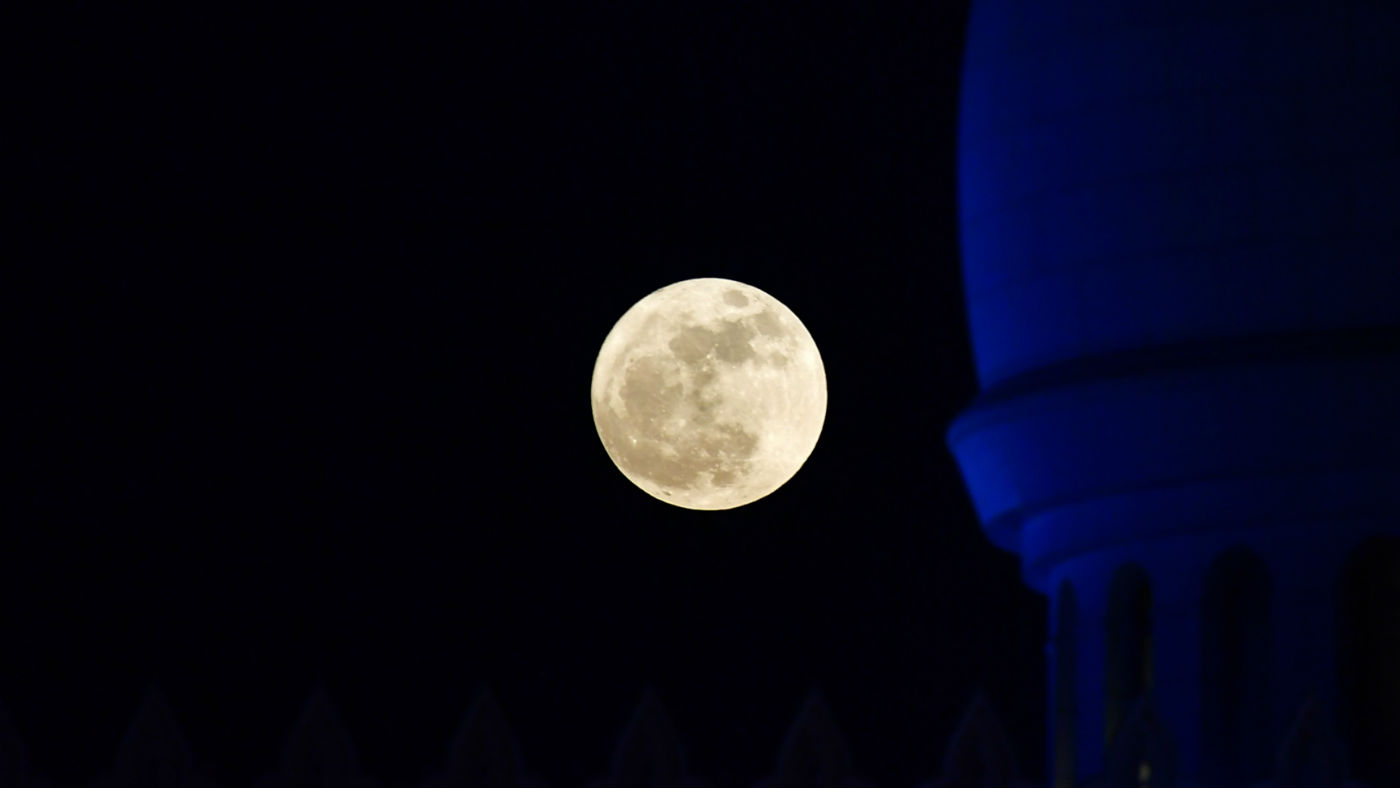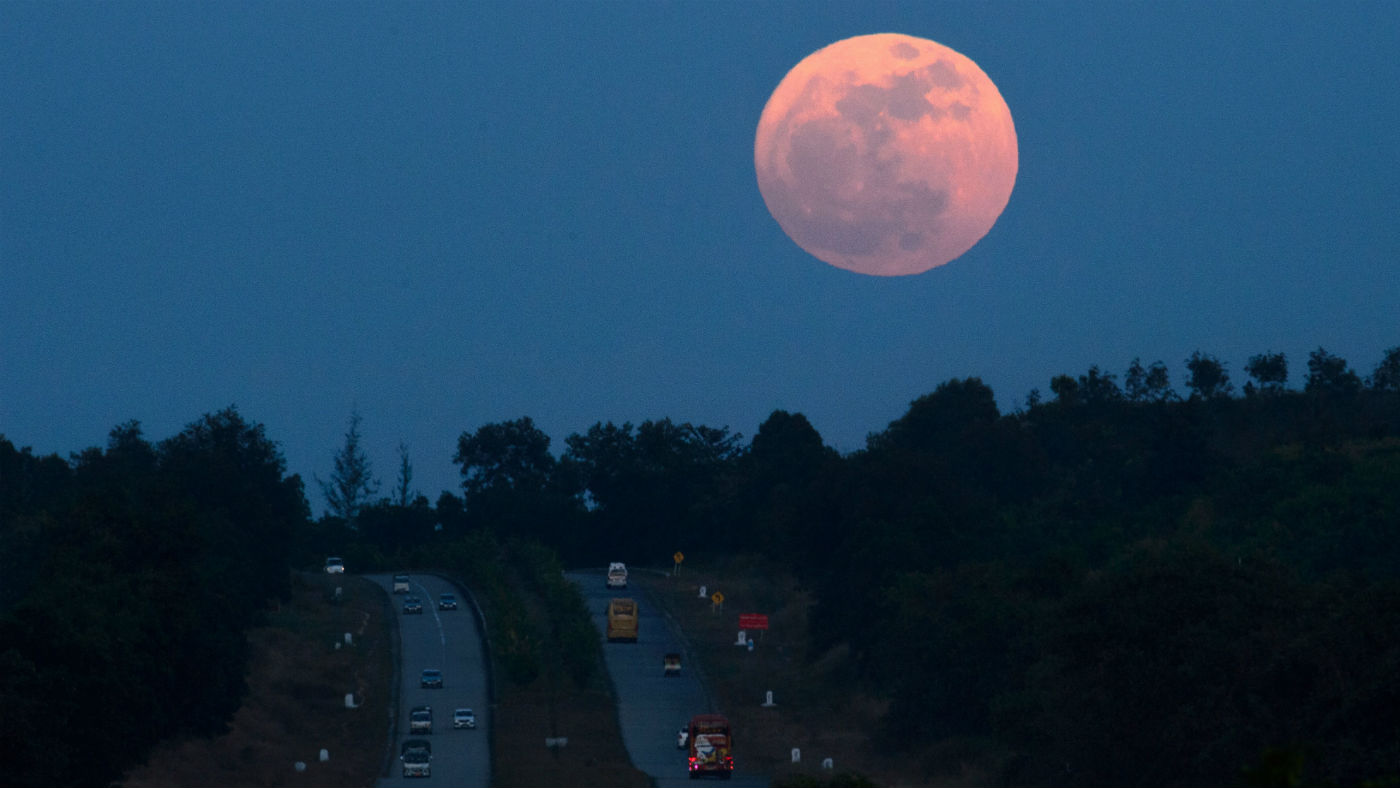Supermoon 2017: best photos from around the world
Moon’s pink, orange and red hues light up skies on Sunday night







Did you see the supermoon on Sunday evening? Even if you aren’t a stargazer, you might have noticed that the moon looked unusually big and bright.

Supermoons occur when the moon’s orbit takes it to its closest point to Earth - also known as a perigee moon - at the same time as a full moon. The combination of the two factors gives the orb an oversized appearance and an extra-luminous shine in the night sky.
However, Royal Greenwich Observatory astronomer Tom Kerss told Sky News that, although the moon is closer to the earth than usual, the difference is imperceptible to the human eye.
The Week
Escape your echo chamber. Get the facts behind the news, plus analysis from multiple perspectives.

Sign up for The Week's Free Newsletters
From our morning news briefing to a weekly Good News Newsletter, get the best of The Week delivered directly to your inbox.
From our morning news briefing to a weekly Good News Newsletter, get the best of The Week delivered directly to your inbox.
“You might think the moon looks unusually large, but this is an illusion created in the mind when it appears close to the horizon.”

As the moon rose and set across Sunday night and Monday morning, it could be seen across the world in various hues of white, pink, orange and red.

Sunday night’s supermoon was the last one of 2017, but the phenomenon is set to occur twice more in January. Supermoons will be visible on 1 January and 31 January, in what Nasa is dubbing a “supermoon trilogy,” the BBC reports.
A free daily email with the biggest news stories of the day – and the best features from TheWeek.com
-
 How to financially prepare for divorce
How to financially prepare for divorceThe Explainer Facing ‘irreconcilable differences’ does not have to be financially devastating
-
 Why it’s important to shop around for a mortgage and what to look for
Why it’s important to shop around for a mortgage and what to look forThe Explainer You can save big by comparing different mortgage offers
-
 4 ways to save on rising health care costs
4 ways to save on rising health care costsThe Explainer Health care expenses are part of an overall increase in the cost of living for Americans
-
 How Bulgaria’s government fell amid mass protests
How Bulgaria’s government fell amid mass protestsThe Explainer The country’s prime minister resigned as part of the fallout
-
 Femicide: Italy’s newest crime
Femicide: Italy’s newest crimeThe Explainer Landmark law to criminalise murder of a woman as an ‘act of hatred’ or ‘subjugation’ but critics say Italy is still deeply patriarchal
-
 Brazil’s Bolsonaro behind bars after appeals run out
Brazil’s Bolsonaro behind bars after appeals run outSpeed Read He will serve 27 years in prison
-
 Americans traveling abroad face renewed criticism in the Trump era
Americans traveling abroad face renewed criticism in the Trump eraThe Explainer Some of Trump’s behavior has Americans being questioned
-
 Nigeria confused by Trump invasion threat
Nigeria confused by Trump invasion threatSpeed Read Trump has claimed the country is persecuting Christians
-
 Sanae Takaichi: Japan’s Iron Lady set to be the country’s first woman prime minister
Sanae Takaichi: Japan’s Iron Lady set to be the country’s first woman prime ministerIn the Spotlight Takaichi is a member of Japan’s conservative, nationalist Liberal Democratic Party
-
 Russia is ‘helping China’ prepare for an invasion of Taiwan
Russia is ‘helping China’ prepare for an invasion of TaiwanIn the Spotlight Russia is reportedly allowing China access to military training
-
 Interpol arrests hundreds in Africa-wide sextortion crackdown
Interpol arrests hundreds in Africa-wide sextortion crackdownIN THE SPOTLIGHT A series of stings disrupts major cybercrime operations as law enforcement estimates millions in losses from schemes designed to prey on lonely users